Reexamining The Gold Standard For Offloading Of DFUs
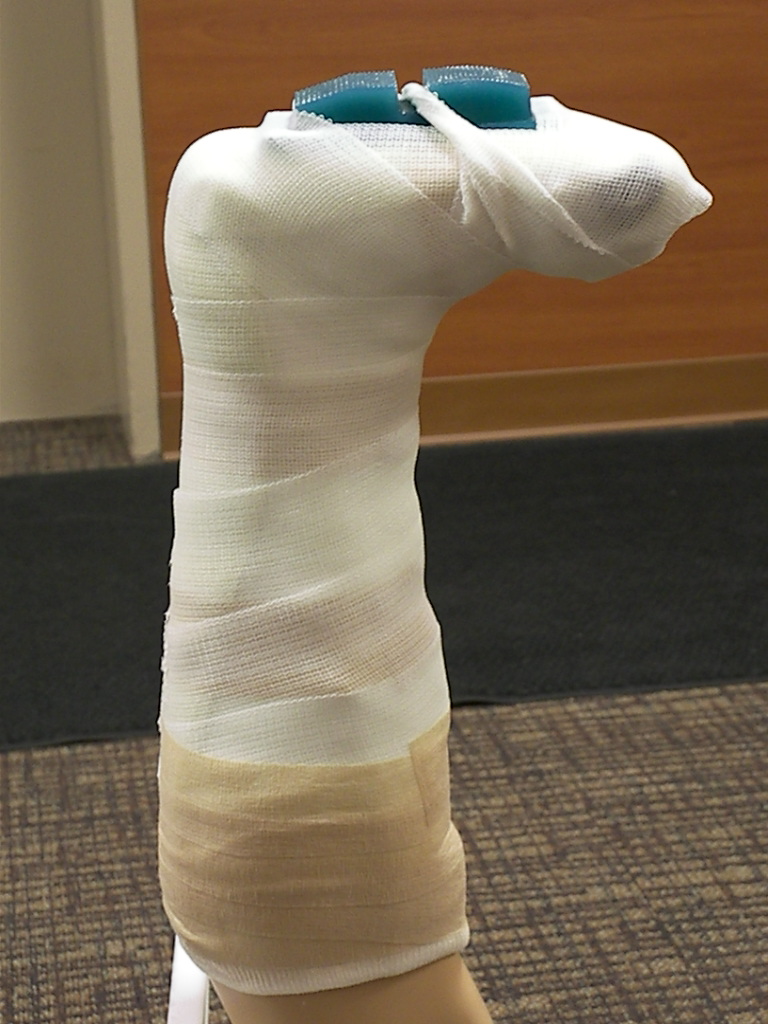 Although the total contact cast can be effective for offloading diabetic foot ulcers, it is not in wide usage. These authors assert the gold standard for offloading lies in the non-removability of the device and offer a closer look at the merits of transitional offloading.
Although the total contact cast can be effective for offloading diabetic foot ulcers, it is not in wide usage. These authors assert the gold standard for offloading lies in the non-removability of the device and offer a closer look at the merits of transitional offloading.
According to the American Diabetes Association, there are approximately 29.1 million Americans, or 9.3 percent of the population, who suffer from diabetes.1 Twenty-one million of these people have already been diagnosed with the disease and 8.1 million remain undiagnosed.
This number, although large, pales in comparison with the 86 million Americans who have been classified as “pre-diabetic” and who are at risk of having diabetes in the near future.1 Each year, 1.7 million Americans 20 years of age or older add to this number. This amounts to 4,660 people per day or one new patient with diabetes every 19 seconds. A full 25.9 percent of Americans age 65 or older suffer from diabetes and its complications. Almost twice as many American Indians (15.9 percent) and African-Americans (13.2 percent) develop the disease as Caucasians (7.6 percent) with Hispanics close behind (12.8 percent). Asian-Americans are not spared as 9 percent of this population will develop the disease and its many complications.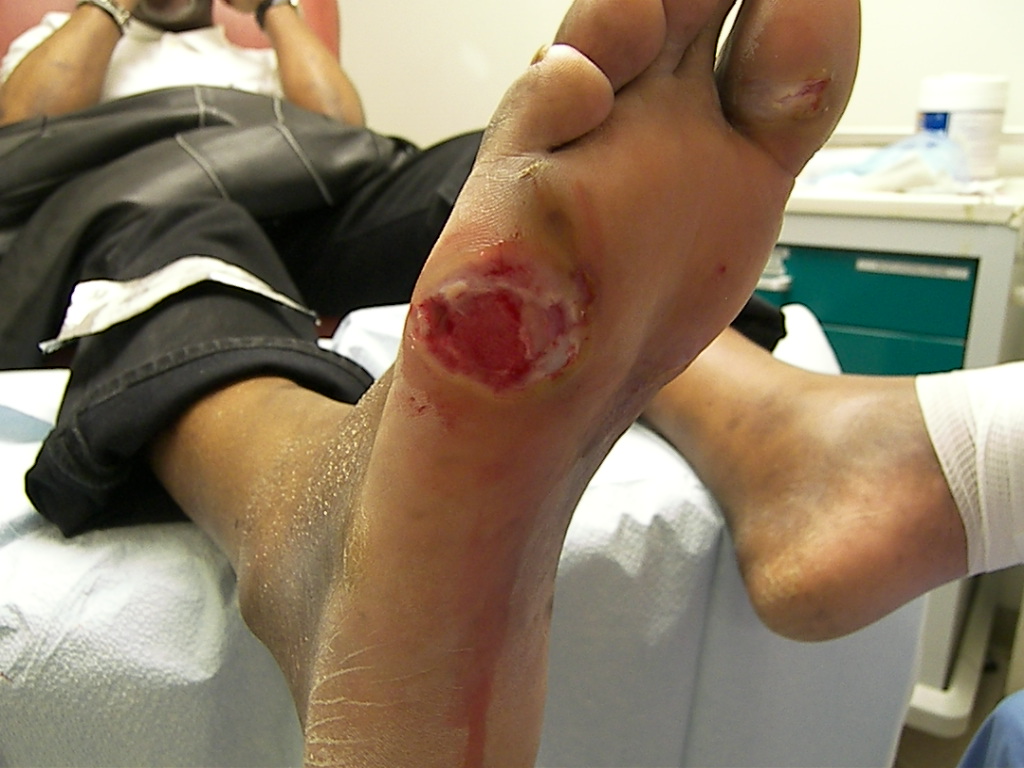
Glycosylation affects all organ systems and leads to complications such as dyslipidemia with an increased incidence of hypertension, and systemic vascular disease. It also leads to the development of a progressive ascending peripheral neuropathy with a loss of sensation and sweat gland function. This in turn leads to ulceration and, in some cases, amputation when infection of the wounds goes unchecked by an immune system that is also compromised by the process.1
Due to the false sense of security patients with diabetes have when they have an absence of pain sensation, approximately 25 percent will develop a foot ulcer at some point in their lifetime.2 Most of these are related to trauma associated with ambulation in a neuropathic state. Seven to 20 percent of these ulcers will subsequently become infected for a number of reasons and may require an amputation of part or all of the foot. Foot wounds lead to 85 percent of the lower extremity amputations for patients with diabetes.3
Early diagno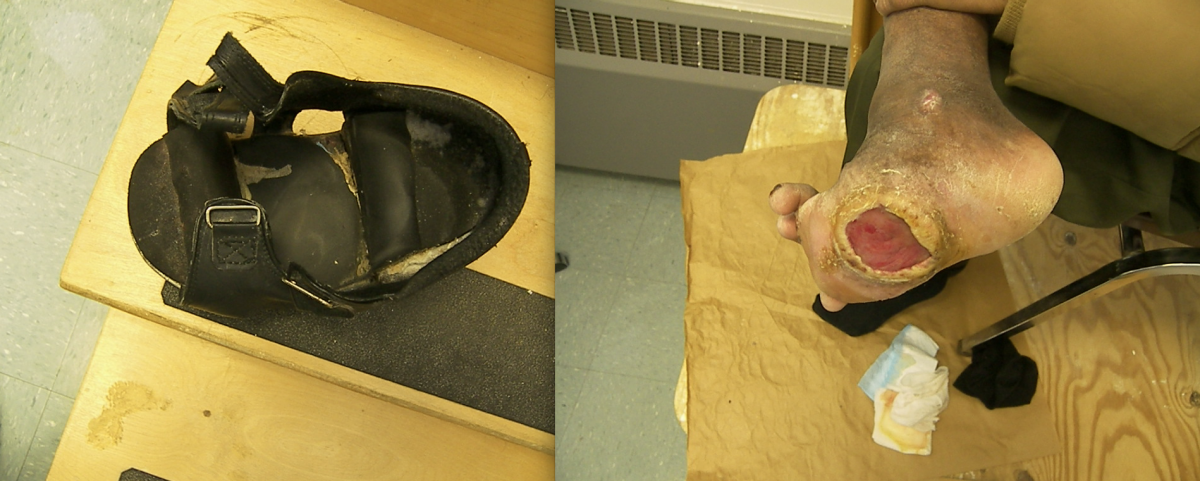 sis and intervention for diabetic foot wounds are essential for the prevention of complications associated with these ulcers.4
sis and intervention for diabetic foot wounds are essential for the prevention of complications associated with these ulcers.4
We are all familiar with the term “the golden hour” with respect to the first 60 minutes after the onset of a stroke or cardiac arrest. The rapid initiation of aggressive care is the key to positive outcomes for these patients. The diabetic foot ulcer has a golden hour as well. The first four weeks after the onset of a diabetic ulcer are key to preventing the development of a chronic wound, staving off infection and allowing for early closure of the skin. Wounds that extend beyond the first four weeks with less than 50 percent closure are destined to become difficult to heal chronic wounds.5
A fundamental component of early intervention for diabetic foot ulcers is the use of an array of offloading devices, which includes everything from total contact casting to depth shoes with molded inserts. Physicians employ these devices sequentially in a transitional manner to heal the wound, mature the skin and prevent recurrence.6-8
Is The TCC Widely Used Enough To Be The ‘Gold Standard’?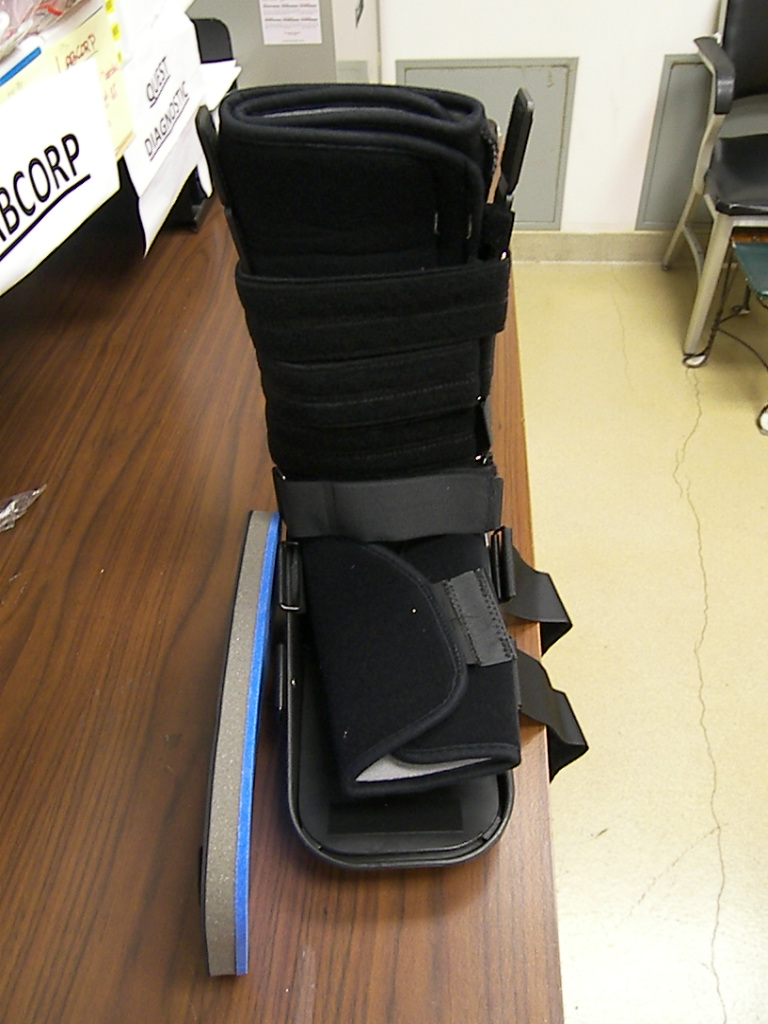
When wound care professionals think of offloading the diabetic foot, the first thing that comes to mind is the total contact cast (TCC). Developed in the 1960s by Brand, the concept of serial casting for the neuropathic foot is widely regarded as the “gold standard” for offloading the ulcerated diabetic foot.9 Recently, in an effort to make the process of casting easier and to profit from the improved healing associated with casting, several companies have produced TCC kits. Despite the TCC’s superior performance as an offloading device and the easy access to materials in kit form, studies by Wu and Fife have demonstrated that the TCC is only in use by 1.7 to 6 percent of clinicians as their primary offloading device for the diabetic foot.10,11
When less than 6 percent of clinicians use a therapy or device, even if that device has the best outcomes, the most that one can claim of the device is outcome superiority. We must reserve the term “gold standard” for something that in addition to achieving good results has also gained wide acceptance as the therapy of choice.
Anyone wh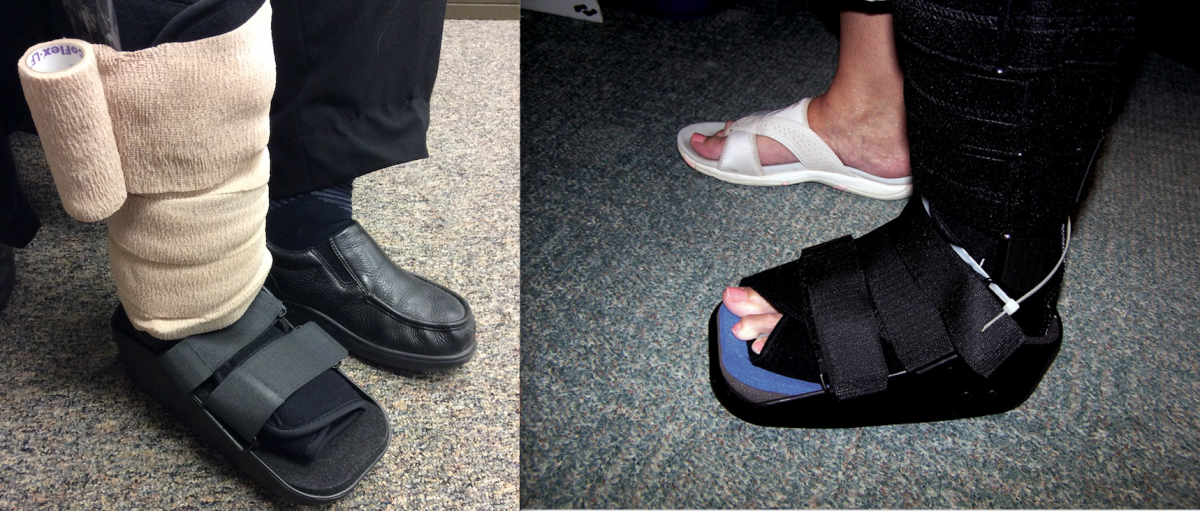 o treats patients with diabetes knows that patients frequently fail to agree to or adhere with the “best care” suggestions we present to them. One medical dictionary defines gold standard as “The best or most successful diagnostic or therapeutic modality for a condition, against which new tests or results and protocols are compared.”12
o treats patients with diabetes knows that patients frequently fail to agree to or adhere with the “best care” suggestions we present to them. One medical dictionary defines gold standard as “The best or most successful diagnostic or therapeutic modality for a condition, against which new tests or results and protocols are compared.”12
We agree that most studies of offloading devices compare their effectiveness to the results of the TCC but at 1.7 to 6 percent usage, it is hard to crown the TCC as the reasonable treatment standard. According to Wu and colleagues, in a study of 895 centers across the country, the offloading device used by most practitioners — and the device that has the worst healing data — would be shoes or a shoe-based system (41.2 percent).11 Shoe-based offloading, by virtue of its consistently poor performance, is a kind of “reverse gold standard.” Anything that demonstrates better healing rates than a shoe-based system would be preferable with the TCC attaining most preferred status.
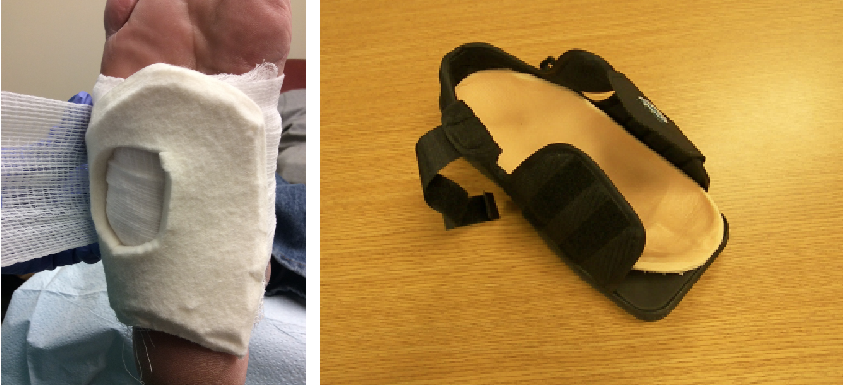 Just to set the record straight, on average, the TCC has demonstrated healing rates as high as 90 percent at 12 weeks in the majority of studies.13-15 In spite of this data, most practitioners end up treating diabetic wounds with one of several alternative devices. Wu found that after shoe-based offloading, the next most popular device for treating diabetic foot ulcers was the removable cast walker at 15.2 percent.10 The reasons why clinicians avoided the TCC included: patient tolerance/acceptance (55.3 percent); the time needed to apply the cast (54.3 percent); cost of materials (31.6 percent); reimbursement issues (27.5 percent); familiarity with method of application (25 percent); customizing parts (20.9 percent); staffing/ordering supplies (15.2 percent); clinician coverage (10.6 percent); and a high perceived complication rate associated with the device.
Just to set the record straight, on average, the TCC has demonstrated healing rates as high as 90 percent at 12 weeks in the majority of studies.13-15 In spite of this data, most practitioners end up treating diabetic wounds with one of several alternative devices. Wu found that after shoe-based offloading, the next most popular device for treating diabetic foot ulcers was the removable cast walker at 15.2 percent.10 The reasons why clinicians avoided the TCC included: patient tolerance/acceptance (55.3 percent); the time needed to apply the cast (54.3 percent); cost of materials (31.6 percent); reimbursement issues (27.5 percent); familiarity with method of application (25 percent); customizing parts (20.9 percent); staffing/ordering supplies (15.2 percent); clinician coverage (10.6 percent); and a high perceived complication rate associated with the device.
In actuality, the complication rate for the TCC is around 5.5 percent as demonstrated in a study by Guyton and coworkers of the application of almost 400 consecutive casts.16 Laing demonstrated that the vast majority of these complications with TCC devices were minor.17 In another study, Wukich found that 93 percent of the complications were minor “pressure” ulcers and did not require a change in the treatment protocol.18
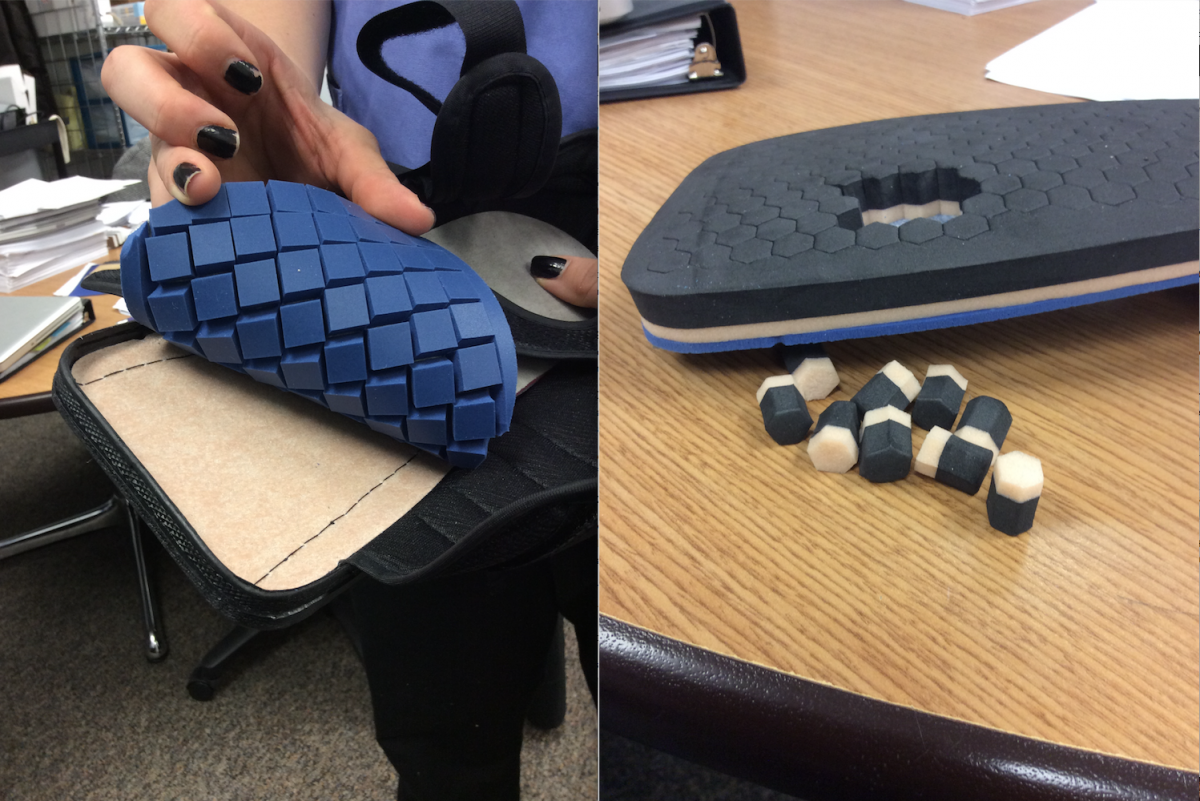 So where do we go for comparable healing rates using a more clinically accepted device? Although the removable cast walker (RCW) is popular, there are several other commonly used offloading devices or techniques that have studies to show effectiveness comparable to the TCC.19 These include the non-removable cast walker or instant total contact cast (iTCC), the modified Carville healing sandal, the felted foam technique, and the Rader football dressing.5,6
So where do we go for comparable healing rates using a more clinically accepted device? Although the removable cast walker (RCW) is popular, there are several other commonly used offloading devices or techniques that have studies to show effectiveness comparable to the TCC.19 These include the non-removable cast walker or instant total contact cast (iTCC), the modified Carville healing sandal, the felted foam technique, and the Rader football dressing.5,6
Clinicians choose these alternative devices based on individual experience, clinical availability, patient preference (or insistence) or reimbursement issues. Prefabricated cast walkers are rapidly gaining acceptance as a reasonable alternative to the TCC. Pressure studies have shown that prefabricated cast walkers are comparable to TCCs in their ability to offload various segments of the foot and close wounds in a similar timeframe as long as the walkers are non-removable.19-21
Therein lies the real definition of the gold standard: It is not the TCC itself but the fact that it is non-removable that makes it the gold standard as we will demonstrate. The gold standard is therefore the “non-removability” of the device, not the magic of the TCC itself.
What You Should Know About The Transitional Approach To Offloading
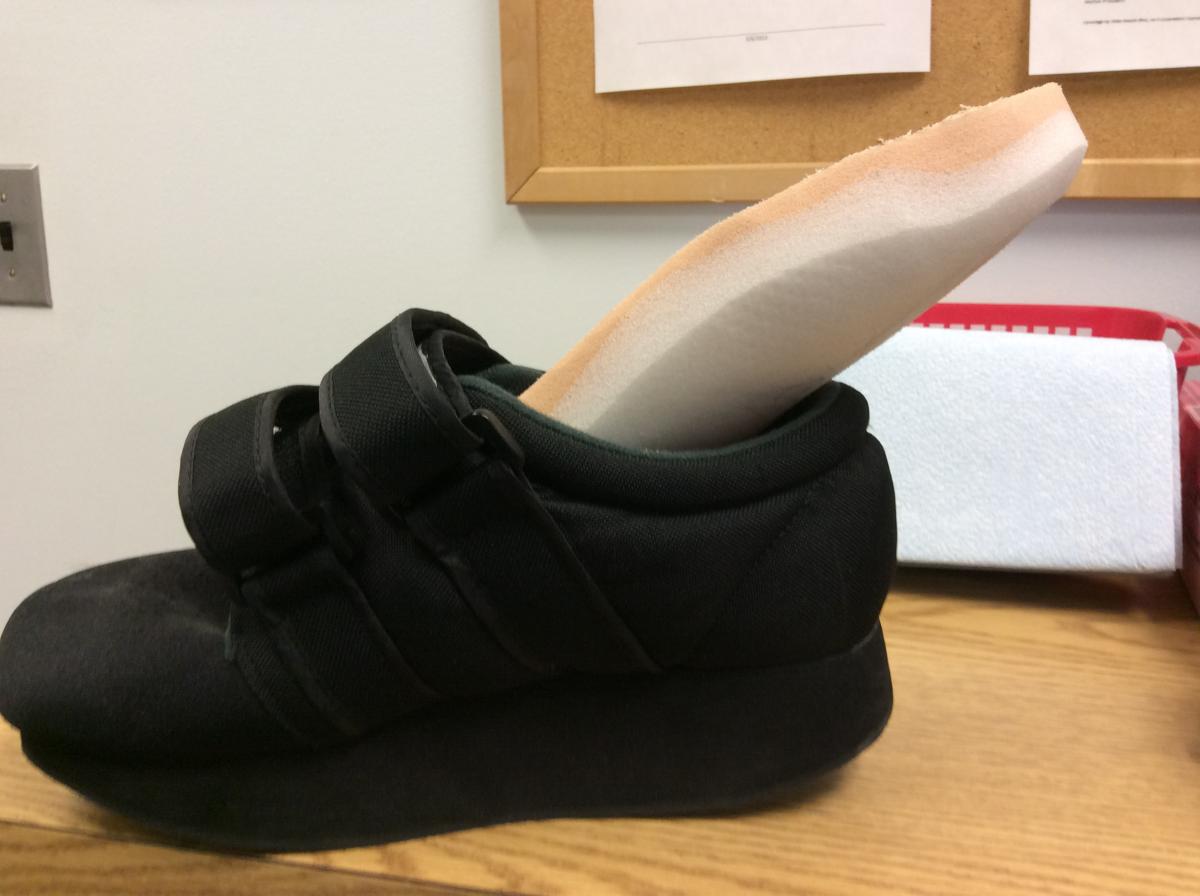 In reality, no one device can function as a single offloading modality throughout the entire continuum of care. At some point, one has to remove the non-removable device and the patient returns to some semblance of normal ambulation. For this reason, McGuire proposed the concept of a transitional offloading approach in 2006 and later in 2010.5,6,22 The author recommended a step-down approach throughout the healing process and included the final footwear in the continuum in order to prevent recurrence of the original wound.
In reality, no one device can function as a single offloading modality throughout the entire continuum of care. At some point, one has to remove the non-removable device and the patient returns to some semblance of normal ambulation. For this reason, McGuire proposed the concept of a transitional offloading approach in 2006 and later in 2010.5,6,22 The author recommended a step-down approach throughout the healing process and included the final footwear in the continuum in order to prevent recurrence of the original wound.
The transitional approach begins with a non-removable device with a fixed ankle such as the TCC or the iTCC, and progresses to non-removable free ankle devices such as the football or felted foam dressing. One can make the iTCC removable once the wound has healed or is approaching closed in a very adherent patient. Another advantage of the removable walker is that the patient can save it and use it immediately in the event that a new wound develops at the wound site, or anywhere else on the foot. It is our goal to teach the patient the seriousness of a foot ulcer and the need for quick offloading and immediate care once an ulcer develops.
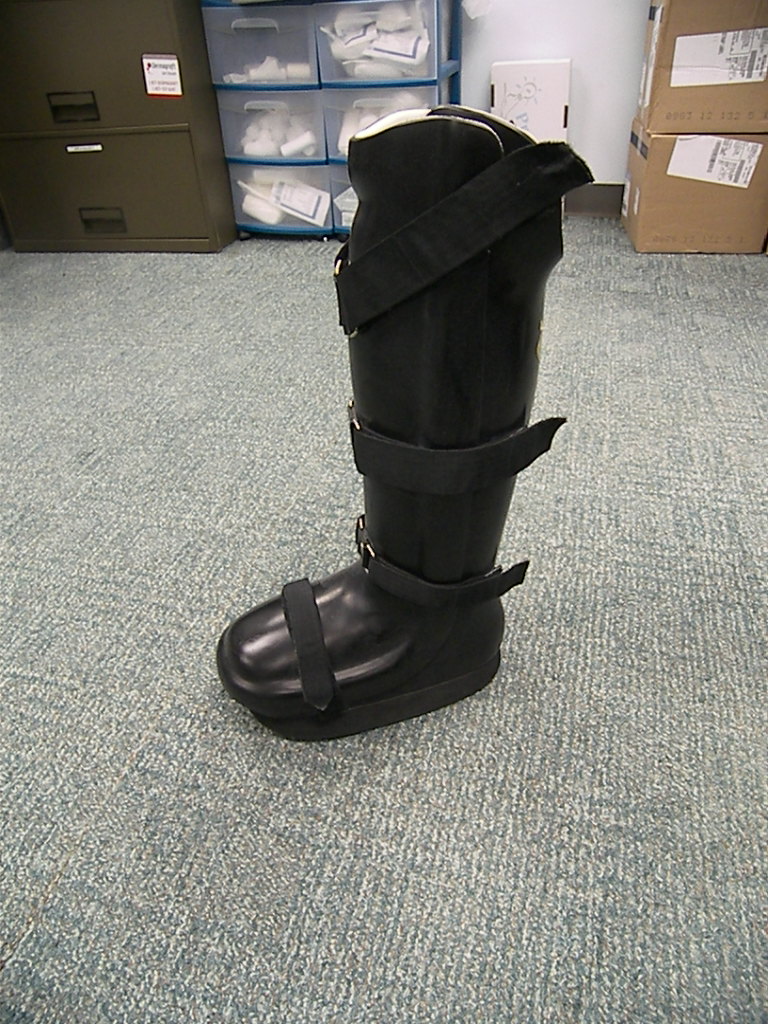 Once the wound has been closed for three weeks or more, one can consider the use of a shoe-based system with a molded or customized insole, or a commercial diabetic healing shoe with a similar custom innersole while patients transition to their final footwear. Custom-molded shoes may be necessary depending on the level of foot deformity. These shoes typically take longer to obtain and are even stronger evidence for the use of a comfortable transitional device. Rapid return to standard footwear is fraught with problems and, in our clinical experience, accounts for a large portion of the recurrences one sees in the literature associated with diabetic foot wounds.
Once the wound has been closed for three weeks or more, one can consider the use of a shoe-based system with a molded or customized insole, or a commercial diabetic healing shoe with a similar custom innersole while patients transition to their final footwear. Custom-molded shoes may be necessary depending on the level of foot deformity. These shoes typically take longer to obtain and are even stronger evidence for the use of a comfortable transitional device. Rapid return to standard footwear is fraught with problems and, in our clinical experience, accounts for a large portion of the recurrences one sees in the literature associated with diabetic foot wounds.
After the skin has matured, the patient can transition to a final offloading device with a rocker sole and a molded total contact orthosis designed to offload areas of high pressure. The rate of recurrence in patients with diabetes with a history of previous ulceration is very high. According to Apelqvist, rates can be as high as 35 to 40 percent over three years, increasing to 70 percent over five years.23
Many patients are unwilling to accept our offloading and treatment suggestions at first, and will require counseling, regular monitoring and immediate intervention should a new wound appear. We provide therapeutic shoes for patients with diabetes via the Medicare Therapeutic Shoe Bill, most insurances and supplemental plans. We can prescribe diabetic shoes for the patient early during the healing process so they are ready when the patient comes out of the transition devices. Too often, poor planning results in a situation in which patients end up returning to their pre-ulcerative footwear while they wait for their offloading shoes. We refer to this as the “danger zone” when patients are most likely to come in with an early ulcer recurrence.
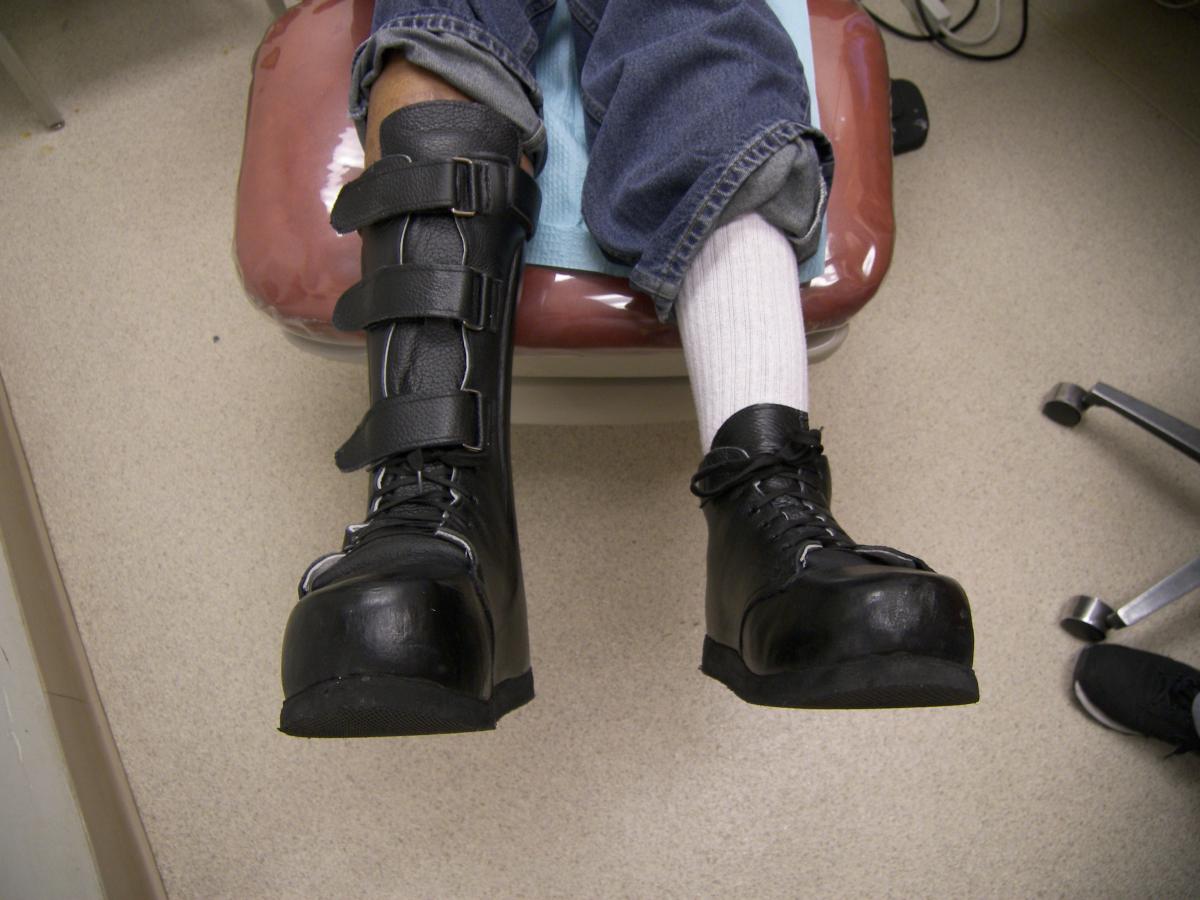 In Conclusion
In Conclusion
Diabetic ulcer management is a cooperative effort between the patient and several medical specialties. Each practitioner must keep communication lines open with the other professionals involved and take the time to reinforce regularly what the patient has to do to fulfill his or her part of the effort. Patients or practitioners who fail to recognize the “emergency” that a foot ulcer represents will be frustrated with the results and some will suffer unnecessary amputation as a result. We have made the case above that it is not the TCC that is the true gold standard but the non-removable device. The benefits that clinicians could realize if they increased their usage of non-removable devices by just a few percentage points are impressive.
Based on the aforementioned data, an estimated 1 to 4 percent of patients with diabetes annually get foot ulcerations.1 Twenty-nine million Americans have diabetes. Supposing the worst, 4 percent of that 29 million or 1.16 million people will develop a foot ulcer each year.
 If we just look at the TCC, based on an optimistic 6 percent usage rate, 69,600 wounds will have treatment with a TCC. This leaves 1,090,400 wounds to be treated by something less than the “gold standard.” If by improving confidence in the use of the TCC, we could increase usage to 10 percent, the number of patients that would benefit would increase to 116,000. If that number could increase to 20 percent, by regularly using non-removable devices, 232,000 wounds could be healed.
If we just look at the TCC, based on an optimistic 6 percent usage rate, 69,600 wounds will have treatment with a TCC. This leaves 1,090,400 wounds to be treated by something less than the “gold standard.” If by improving confidence in the use of the TCC, we could increase usage to 10 percent, the number of patients that would benefit would increase to 116,000. If that number could increase to 20 percent, by regularly using non-removable devices, 232,000 wounds could be healed.
The potential for lives restored and limbs saved is significant. Early healing equals reduced risks for the patient with diabetes. As we have seen, although the non-removable device is the preferred gateway to healing, and a significantly lower morbidity and potential mortality are possible with an adoption rate over 6 percent, prevention of recurrence is actually the key to lasting success for the diabetic foot. Convincing the patient to cooperate with the continuum of care, adopt changes in his or her lifestyle, and change the patient’s concept of both style and function in his or her footwear choices is the ultimate challenge for the clinician and the changing healthcare system.
Dr. McGuire is a Clinical Associate Professor in the Departments of Podiatric Medicine and Podiatric Biomechanics at the Temple University School of Podiatric Medicine. He is the Director of the Leonard S. Abrams Center for Advanced Wound Healing in Philadelphia.
Mr. Sebag is a fourth-year medical student at the Temple University School of Podiatric Medicine in Philadelphia.
References
- American Diabetes Association. Statistics about diabetes. Available at https://www.diabetes.org/diabetes-basics/statistics/?loc=db-slabnav .
- Singh N, Armstrong DG, Lipsky BA. Preventing foot ulcers in patients with diabetes. JAMA. 2005;293(2):217–28.
- Frykberg R, Zgonis T, Armstrong D, et al. Diabetic foot disorders: a clinical practice guideline (2006 revision). J Foot Ankle Surg. 2006; 45(5 Suppl):S1-66.
- Schwegler B, Boni T, et al. [Practical management of diabetic foot]. Ther Umsch. 2002;59(8):435–42.
- Sheehan P, Jones P. A percent change in wound area of diabetic foot ulcers over a 4-week period is a robust predictor of complete wound healing in a 120-week prospective trial. Diabetes Care. 2003;26(6):1879-1882.
- McGuire J, Pressure redistribution strategies for the diabetic or at-risk foot: part I. Advances Skin Wound Care. 2006; 19(4):213-221.
- McGuire J. Pressure redistribution strategies for the diabetic or at-risk foot: part II. Advances Skin Wound Care. 2006; 19(5):270-277.
- Wu SC, Crews RT, Armstrong DG. The pivotal role of offloading in the management of neuropathic foot ulceration. Curr Diab Rep. 2005;5(6):423–9.
- Brand PW. The Insensitive Foot. In: Jahss MM (ed): Disorders of the Foot, Volume 2. WB Saunders Co, Philadelphia, 1982.
- Fife CE, Carter MJ, Walker D. Why is it so hard to do the right thing in wound care? Wound Repair Regen. 2010;18(2):154-8.
- Wu SC, Jensen JL, Weber AK, Robinson DE, Armstrong DG. Use of pressure offloading devices in diabetic foot ulcers: do we practice what we preach? Diabetes Care. 2008;31(11):2118-9.
- McGraw-Hill Concise Dictionary of Modern Medicine. Available at https://medical-dictionary.thefreedictionary.com/gold+standard . Published 2002.
- Armstrong DG, Nguyen HC, Lavery LA, van Schie CH, Boulton AJ, Harkless LB. Off-loading the diabetic foot wound: a randomized clinical trial. Diabetes Care. 2001;24(6):1019-22.
- Piaggesi A, Viacava P, Rizzo L, et al. Semiquantitative analysis of the histopathological features of the neuropathic foot ulcer: effects of pressure relief. Diabetes Care. 2003; 26(11):3123-8.
- Armstrong DG, Nguyen HC, Lavery LA, van Schie CH, Boulton AJ, Harkless LB. Off-loading the diabetic foot wound: A randomized clinical trial. Diabetes Care. 2001;24(6):1019-22.
- Guyton GP. An analysis of iatrogenic complications from the total contact cast. Foot Ankle Int. 2005; 26(11):903-7.
- Laing PW, Cogley DI, Klenerman L. Neuropathic foot ulceration treated by total contact casts. J Bone Joint Surg Br. 1992; 74(1):133-66.
- Wukich DK, Motko J. Safety of total contact casting in high-risk patients with neuropathic foot ulcers. Foot Ankle Int. 2004; 25(8):566-60.
- Birke JA, Pavich MA, Patout Jr CA, Horswell R. Comparison of forefoot ulcer healing using alternative off-loading methods in patients with diabetes mellitus. Adv Skin Wound Care. 2002;15(5):210-5.
- Katz IA, Harlan A, Miranda-Palma B, Prieto-Sanchez L, et al. A randomized trial of two irremovable off-loading devices in the management of plantar neuropathic diabetic foot ulcerations. Diabetes Care. 2005; 28(3):555-9.
- Armstrong DG, Lavery LA, Wu S, Boulton AJ. Evaluation of removable and irremovable cast walkers in the healing of diabetic foot wounds: a randomized controlled trial. Diabetes Care. 2005; 28(3):551-4.
- McGuire J. Transitional off-loading: an evidence-based approach to pressure redistribution in the diabetic foot. Adv Skin Wound Care. 2010;23(4):175-88
- Apelqvist J, Larsson J, Agardh CD. Long-term prognosis for diabetic patients with foot ulcers. J Intern Med. 1993; 233(6):485–91.
Additional References
24. Baker RE. Total contact casting. J Am Podiatr Med Assoc. 1995; 85(3):172-6.
25. Myerson M, Papa J, Eaton K, Wilson K. The total-contact cast for management of neuropathic plantar ulceration of the foot. J Bone Joint Surg Am. 1992; 74(2):261-9.
26. Sinacore DR, Mueller MJ, Diamond JE, et al. Diabetic plantar ulcers treated by total contact casting. A clinical report. Phys Ther. 1987; 67(10):1543-9.











